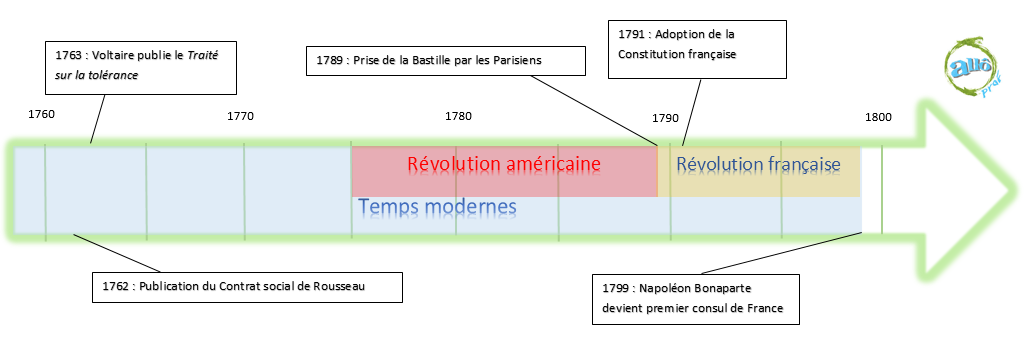
Note : Image in English coming soon
The French Revolution followed directly on from the American Revolution. In fact, the American Revolution can be seen as a cause of the French Revolution. The ideas of the Enlightenment philosophers led the French to take up arms and rebel against the monarchy. The French Revolution ended with the return of absolute power by Napoleon Bonaparte in 1799.
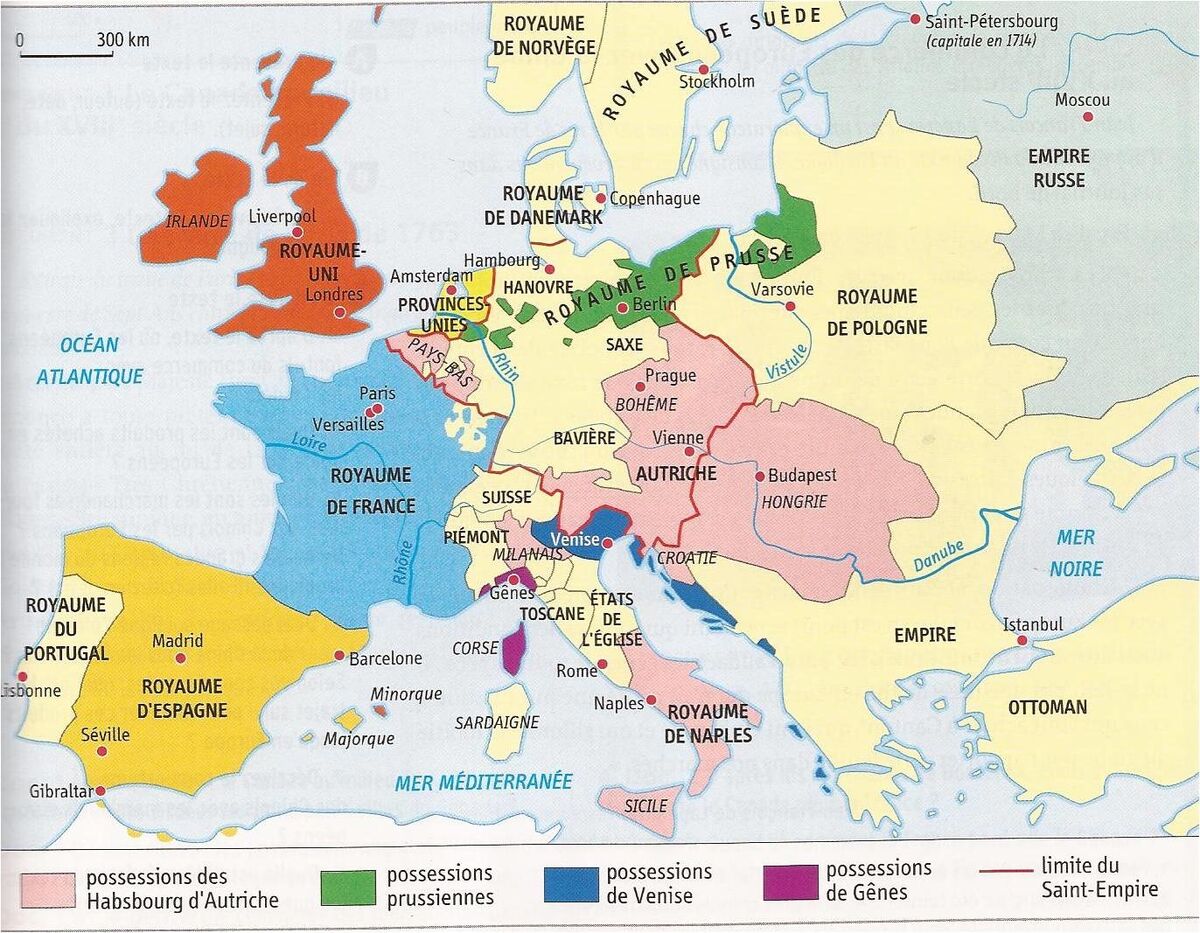
Note : Image in English coming soon
There were several reasons why the French rose up against their leaders in the 18th century. From the outset, the political regime in place, an absolute monarchy, created a clear imbalance between the social classes of the time. This sense of injustice was accompanied by a financial and agricultural crisis.
France in the 18th century lived under a political system known as absolute monarchy. In this political system, a monarch (a king or queen) held all the powers. This political system in France was known as the Ancien Régime. The king lives in his castle, at Versailles, from where he imposes his decisions on the rest of the population.
It was the centralisation of power by the leaders of the Ancien Régime and the ideas of the Enlightenment thinkers or Enlightenment philosophers that led the French people to revolt against the established authorities.
The Ancien Régime had its own particular characteristics. There were three social groups, the three social orders: the nobility, the clergy and the Third Estate. Members of the Third Estate were treated less favourably than members of other social classes. This situation contradicted the ideas of the Enlightenment thinkers or Enlightenment philosophers, such as freedom, equality and justice.
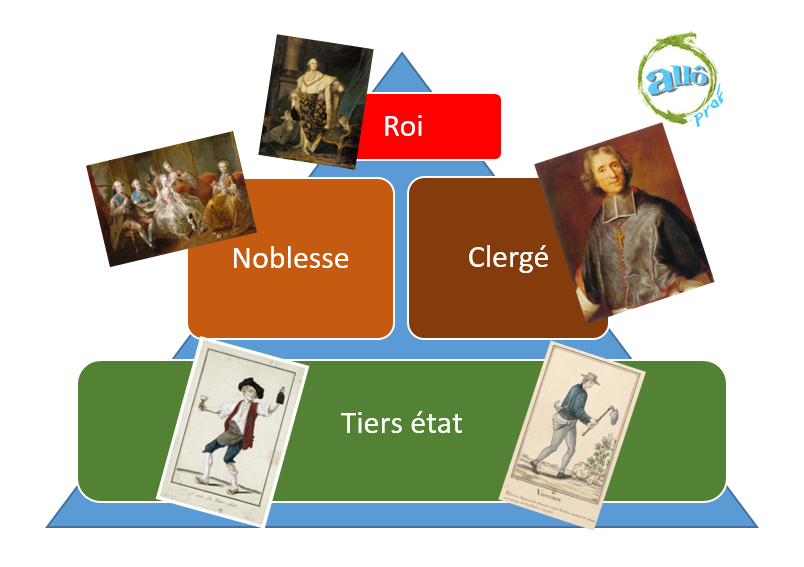
Image sources: King / Nobility / Clergy/ Third state 1/ Third state 2
Note : Image in English coming soon.
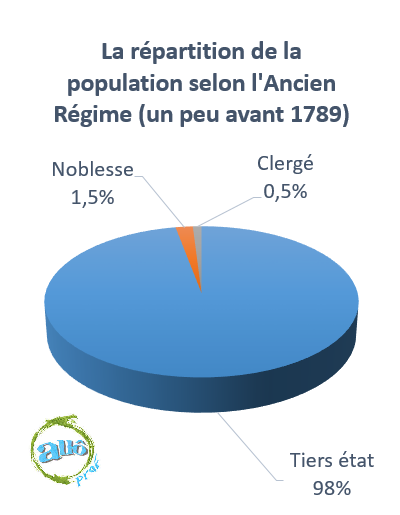
Note: Image in English coming soon
Obviously, the king, who possesses all the powers, is at the very top of the social pyramid.
Next, the nobility and the clergy make up the most privileged 2% of the population. They paid little income tax (sometimes none at all) and lived off the income from their extensive land holdings, which gave them plenty of time to take up important positions in the royal administration.
Finally, the Third Estate represented the rest of the population. These people had to pay income tax. All this money was used to cover royal expenses. Although some members of the Third Estate have managed to become wealthy, the vast majority live in poverty, crushed by the weight of royal income taxes.
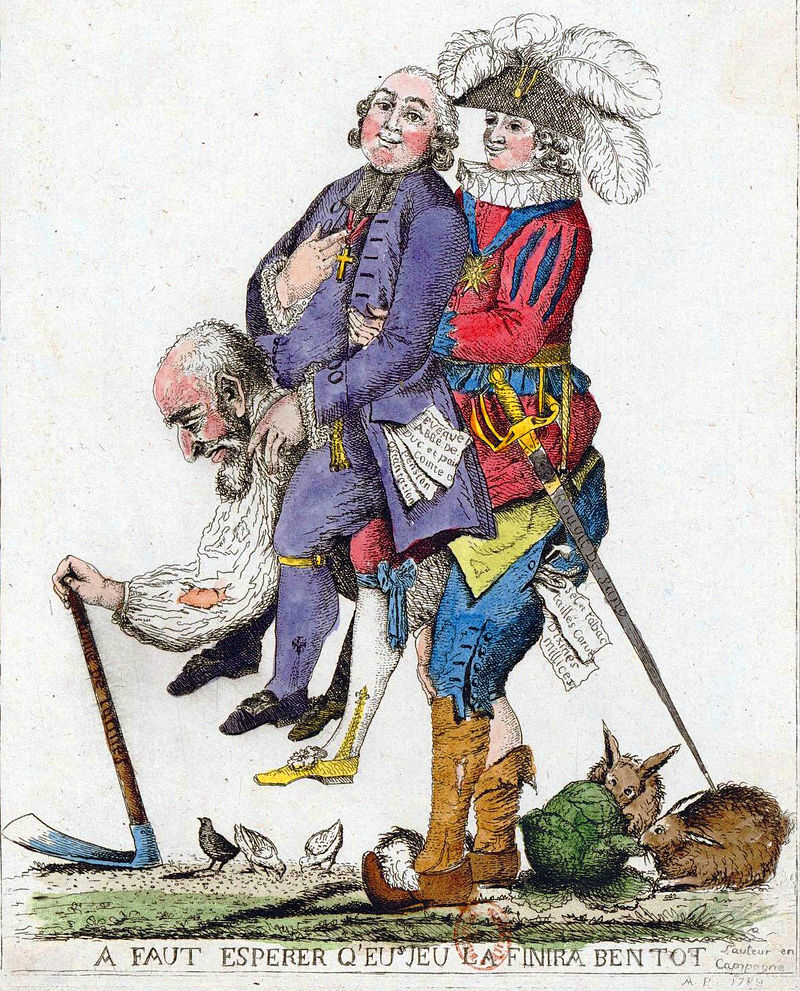
Representation of the Ancien Régime. The Third Estate provided financial support for the nobility and clergy.
This illustration is a good illustration of the burden that the Third Estate carries on its shoulders. Since only members of the Third Estate pay income tax, they feel a sense of injustice because they are the ones who pay for all the expenses of the king, the nobility and the clergy.
Following the Seven Years' War (1756-1763), France found itself deep in debt. In order to cover the deficit, the King of France turned to the Third Estate, imposing more taxes on them. The nobility and clergy, on the other hand, were not taxed any more and did not limit their spending. All these factors led to a feeling of injustice among the peasants.
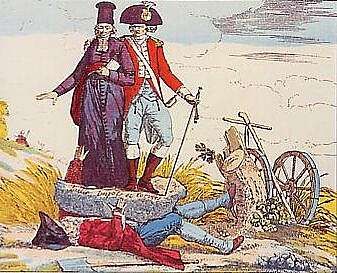
Representation of the Third Estate crushed under royal income taxes
The difficult weather conditions in France between 1787 and 1788 led to poor harvests. Peasants from the Third Estate struggled to make ends meet, while some members of the nobility stockpiled wheat and sold it at high prices. The harvests were so bad that the commoners or the people feared famine. Once again, it was the upper classes (king, nobility and clergy) who were getting rich off the backs of the Third Estate.
